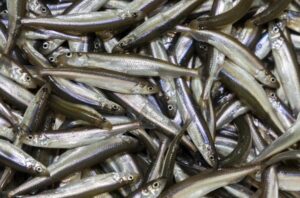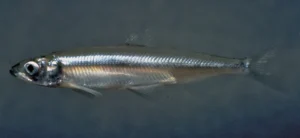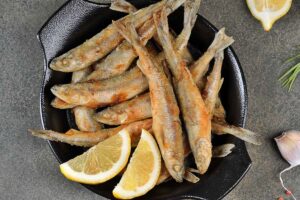Smelt fish are small, silvery fish that have captured the interest of anglers, chefs, and ecologists alike. Known for their distinctive aroma and delicate taste, these fish are a staple in many cuisines and play a vital role in aquatic ecosystems. This comprehensive guide delves into the various aspects of smelt fish, including their species classification, habitat, behavior, culinary uses, nutritional benefits, fishing techniques, conservation status, and ecological importance.
Species Classification and Identification

Smelt fish belong to the Osmeridae family, which includes several species found in both freshwater and saltwater environments. Some of the most common species include:
- European Smelt (Osmerus eperlanus): Found in the coastal waters of Northern Europe, this species is known for its cucumber-like odor and is often caught in rivers during spawning.
- Rainbow Smelt (Osmerus mordax): Native to the North Atlantic and Arctic Oceans, this species has been introduced to the Great Lakes and other freshwater systems in North America.
- Eulachon (Thaleichthys pacificus): Also known as candlefish, eulachon are native to the Pacific Northwest and are prized for their high oil content.
- Surf Smelt (Hypomesus pretiosus): Found along the Pacific coast of North America, this species is often targeted by recreational anglers.
Physical Characteristics

Smelt fish are small and slender, typically measuring between 6 to 12 inches (15 to 30 cm) in length. They have a translucent, silver body with a distinctive green or blue sheen along the back. Their scales are small and easily shed, contributing to their delicate appearance.
Distinguishing Features
- Aroma: Many smelt species have a unique aroma reminiscent of cucumber or freshly cut melon, which is most pronounced during spawning.
- Mouth: Smelt have small, upturned mouths adapted for feeding on plankton and small invertebrates.
Habitat and Distribution
Smelt fish are found in a variety of aquatic environments, ranging from the coastal waters of the North Atlantic and Pacific Oceans to freshwater lakes and rivers. They are highly adaptable and can tolerate a wide range of salinities and temperatures.
Preferred Environments
Smelt fish thrive in temperate and cold waters, often inhabiting coastal estuaries, bays, and river systems. Their habitats can be broadly categorized into the following:
- Marine Environments: Many smelt species are anadromous, meaning they spend most of their lives in saltwater and migrate to freshwater to spawn. They are often found in nearshore waters, where they feed on plankton and small crustaceans.
- Freshwater Environments: Some smelt species, like the rainbow smelt, have adapted to live entirely in freshwater environments, particularly in the Great Lakes and inland rivers.
Migration Patterns
Smelt fish are known for their migratory behavior, particularly during the spawning season. Anadromous smelt migrates from the ocean to freshwater rivers and streams to spawn, often traveling considerable distances. Freshwater species may also exhibit migratory behavior within lakes and river systems, moving to shallow areas to spawn.
Behavior and Feeding Habits
Smelt fish are social creatures, often found in large schools. Their behavior is influenced by environmental factors such as water temperature, salinity, and food availability.
Feeding Strategies
Smelt fish are primarily planktivorous, feeding on small zooplankton, crustaceans, and insect larvae. They use their upturned mouths to capture prey from the water column, exhibiting the following feeding behaviors:
- Filter Feeding: Smelt often feeds by filtering plankton from the water using their fine gill rakers.
- Opportunistic Feeding: They may also feed on small fish and invertebrates, particularly during periods of high prey abundance.
Social Behavior and Reproduction
Smelt fish are social and form large schools, which provide protection from predators and enhance feeding efficiency. Their reproductive behavior varies by species but generally follows these patterns:
- Spawning Season: Smelt typically spawns in the spring, though timing can vary depending on water temperature and location.
- Spawning Habitats: They prefer shallow, gravelly areas in rivers and streams for spawning, where females release eggs that adhere to the substrate.
- Egg and Larval Stages: After hatching, smelt larvae are planktonic, drifting with currents until they develop into juveniles and settle in suitable habitats.
Culinary Uses and Nutritional Benefits

Smelt fish are a culinary delight in many cultures, celebrated for their delicate flavor and versatile cooking applications. Their small size makes them ideal for a variety of dishes, and they are often consumed whole due to their tender bones and mild taste.
Popular Dishes
- Fried Smelt: A classic preparation, smelt is often breaded or battered and fried until crispy. They are typically served with lemon wedges and dipping sauces.
- Smelt Roe: The eggs of smelt fish are prized in certain cuisines, used in sushi, and as a garnish for various dishes.
- Grilled Smelt: Marinated and grilled over an open flame, smelt offers a smoky flavor that pairs well with herbs and spices.
- Smelt Ceviche: Marinated in citrus juice with onions, peppers, and cilantro, smelt makes a refreshing and flavorful ceviche.
Nutritional Profile
Smelt fish are a nutritious addition to the diet, offering a range of health benefits:
- Protein: High in lean protein, smelt supports muscle growth and repair.
- Omega-3 Fatty Acids: These healthy fats promote heart health, reduce inflammation, and support brain function.
- Vitamins and Minerals: Smelt is a good source of vitamins B12, D, and selenium, which contribute to overall health and well-being.
- Low in Calories: Smelt fish are low in calories, making them a healthy choice for those seeking to maintain a balanced diet.
Fishing Techniques and Tips
Smelt fishing is a popular recreational activity, particularly during the winter months when ice fishing for smelt becomes a favorite pastime. Here are some effective techniques and tips for catching smelt:
Ice Fishing
Ice fishing for smelt is a popular winter activity in regions where lakes and rivers freeze over. Anglers use specialized equipment to target smelt through small holes in the ice.
- Equipment: Light tackle with small hooks and brightly colored jigs or bait is recommended.
- Bait: Common baits include maggots, small worms, and artificial lures that mimic plankton.
- Technique: Jigging is a common method, involving a rhythmic up-and-down motion to attract smelt.
Dip Netting
Dip netting is a simple and effective method for catching smelt during their spawning runs in rivers and streams.
- Equipment: A long-handled dip net with fine mesh is used to scoop smelt from shallow waters.
- Timing: Dip netting is most effective during peak spawning season when smelt is concentrated in shallow areas.
Shore Fishing
Shore fishing for smelt is popular in coastal areas and estuaries, where smelt can be caught from piers, jetties, and beaches.
- Equipment: Light spinning rods with small hooks and bait are ideal for shore fishing.
- Bait: Smelt can be caught using small pieces of fish, shrimp, or artificial lures.
Tips for Success
- Location: Target areas with abundant plankton and small invertebrates, where smelt are likely to be feeding.
- Timing: Early morning and late afternoon are often the most productive times for smelt fishing, as they are more active during these periods.
- Weather: Calm weather conditions improve visibility and increase the chances of a successful catch.
Conservation Status and Ecological Importance
Smelt fish are generally abundant, but some populations face threats from habitat loss, pollution, and overfishing. Conservation efforts are essential to protect these fish and ensure their populations remain stable.
Ecological Role
Smelt fish play a crucial role in aquatic ecosystems as both prey and consumers:
- Prey: They serve as a vital food source for larger fish, birds, and marine mammals, contributing to the balance of aquatic food webs.
- Consumers: By feeding on plankton and small invertebrates, smelt helps regulate prey populations and contributes to nutrient cycling.
Conservation Efforts
Efforts to conserve smelt populations include:
- Habitat Protection: Preserving critical habitats, such as spawning and feeding areas, from pollution and development.
- Fishing Regulations: Implementing size and catch limits to prevent overfishing and ensure sustainable populations.
- Research and Monitoring: Conducting studies to better understand smelt populations, ecology, and potential threats, leading to more effective management strategies.
Conclusion
Smelt fish are a fascinating and valuable species with ecological, culinary, and recreational significance. Their adaptability and resilience make them a key component of aquatic ecosystems, while their culinary versatility offers delicious options for food enthusiasts. Understanding and appreciating the role of smelt fish in nature and culture can contribute to their conservation and ensure their continued presence in waters worldwide for generations to come. Whether you’re an angler seeking a challenging catch or a chef exploring new flavors, smelt fish offer a rich and rewarding experience that embodies the spirit of the sea.

